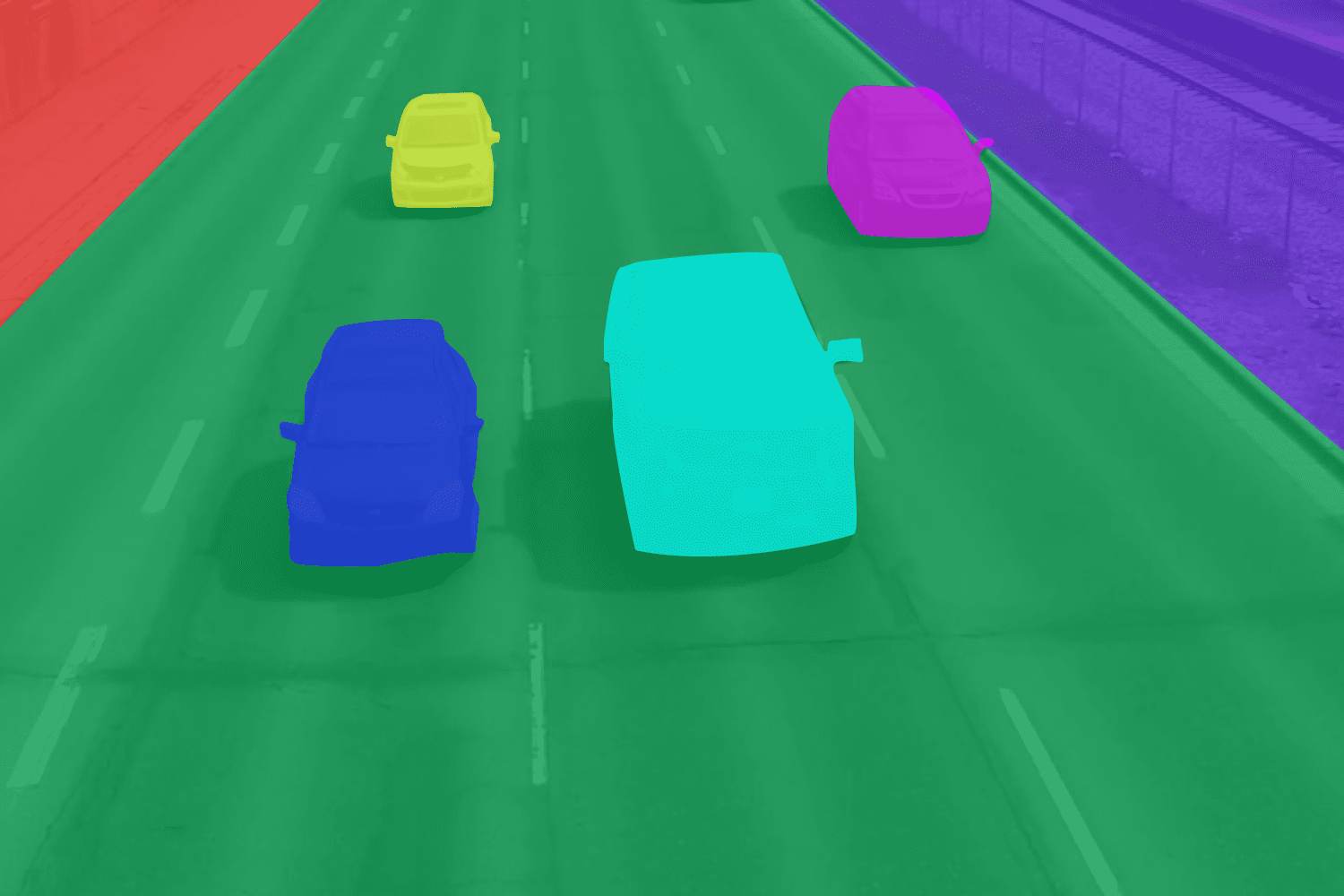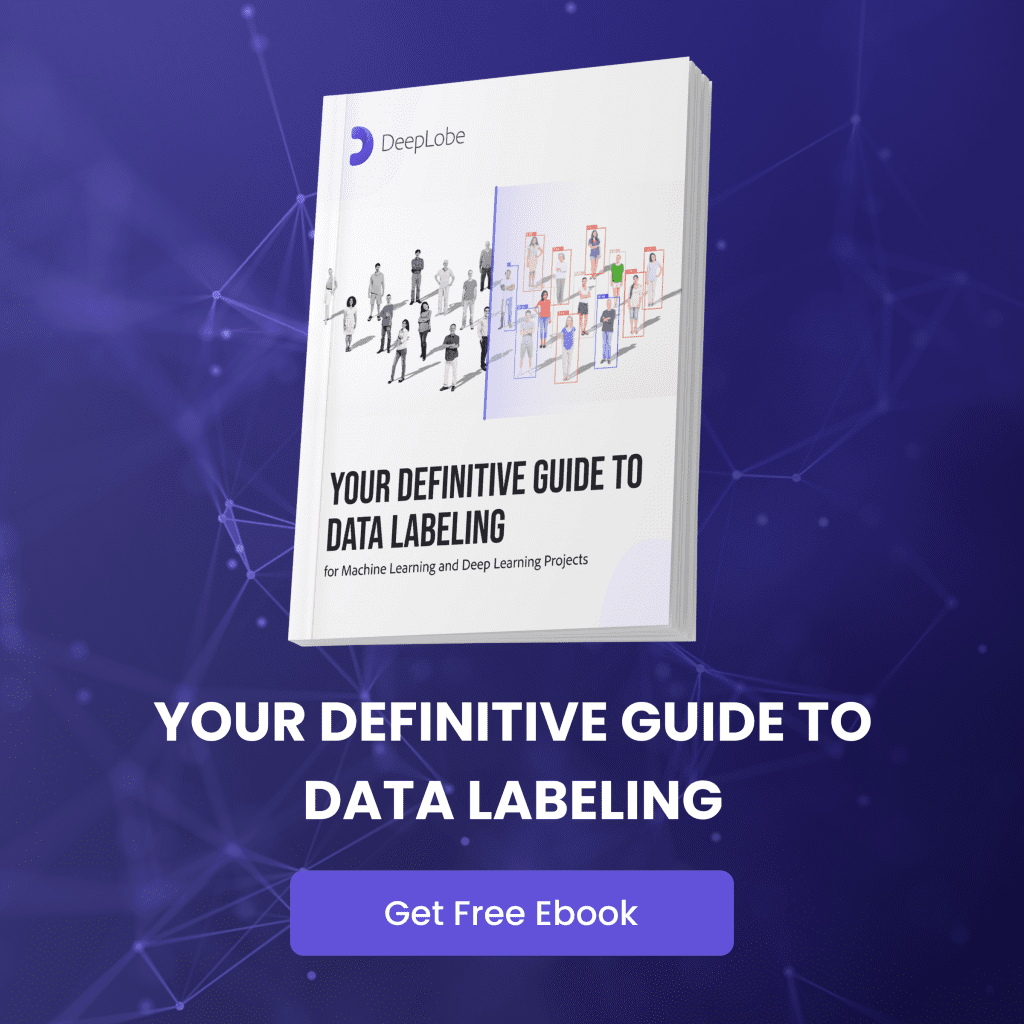
adminMarch 31, 2023Uncategorized
Segmentation is a common term used in business today. Image Segmentation is a crucial computer vision or vision AI application – a technique used to divide visual data such as an image into segments containing specific, similar, and important information of the same class label. It applies a range of methods and algorithms that help machines identify and understand different elements within an image. In this blog, we’ll delve deeper into one of the Image Segmentation techniques, instance segmentation.
Instance segmentation involves identifying and segmenting individual objects within an image. Here we will explore its applications and discuss its significance in various industries.
Revolutionizing Manufacturing Processes with Advanced Vision Technology
Manufacturing is a trillion-dollar industry and quality control is a major challenge. Instance Segmentation is a powerful tool that has revolutionized the way manufacturers detect and prevent faulty products from reaching the market. With its ability to identify and segment individual objects within an image, instance segmentation has become a crucial component of quality control in the manufacturing industry. Apart from quality control instance segmentation helps with inventory management, process optimization, predictive maintenance, and robotic automation.
Quality Control: Instance segmentation can be used to inspect products for defects and inconsistencies during the manufacturing process. By segmenting individual products and analyzing them, manufacturers can identify defects and take corrective actions in real time. This helps to minimize production costs and reduce product recalls.
Inventory Management: Instance segmentation can be used to track and manage inventory levels in time. By segmenting individual items in an image, manufacturers can monitor inventory levels, identify shortages, and replenish stock. This helps manufacturers to optimize their inventory management and reduce the risk of stockouts.
Robotic Automation: Instance segmentation can be used to guide robots and automate various manufacturing processes. By segmenting individual components in an image, manufacturers can program robots to perform precise actions such as assembly, sorting, and quality control. This helps to increase productivity, reduce labor costs, and improve product quality.
Predictive Maintenance: Instance segmentation can be used to monitor equipment health and predict maintenance needs. By analyzing images of equipment, manufacturers can identify signs of wear and tear and predict when maintenance is needed. This helps to minimize downtime and increase equipment lifespan.
Process Optimization: Instance segmentation can be used to analyze manufacturing processes and identify opportunities for optimization. By segmenting individual components and analyzing their interactions, manufacturers can identify bottlenecks, inefficiencies, and opportunities for improvement. This helps to optimize manufacturing processes, reduce production costs, and improve product quality.
Autonomous Vehicles
Autonomous vehicles the future of transportation is here. But, the ability of autonomous vehicles to recognize road markings, lane boundaries, and other features of the road infrastructure and use this information to navigate complex intersections, change lanes, and follow the appropriate path still need progress.
Instance segmentation is playing a crucial role in helping autonomous solve these challenges. With its ability to identify and segment individual objects within an image, instance segmentation allows autonomous vehicles to recognize and track objects in their environment with remarkable accuracy.
For example, using instance segmentation, autonomous vehicles can detect and differentiate between various objects on the road, such as other vehicles, pedestrians, traffic signs, and traffic lights. This information helps the vehicle make better decisions, such as adjusting its speed and path to avoid collisions and navigate around obstacles.
Robotics Redefined with Instance Segmentation
Instance segmentation is a powerful technique that re-approaching how robots perceive and interact with objects and humans in their environment to make better decisions and perform assigned tasks more effectively.
One such instance is where instance segmentation can help robots recognize and interact with human beings. By identifying and segmenting individual humans within an image, robots can detect and respond to human gestures, facial expressions, and other cues. This can help robots perform tasks such as guiding people through a building, providing assistance to people with disabilities, or working alongside human workers in performing tasks in various industries.
As researchers continue to develop and refine instance segmentation algorithms, we can expect to see even more advanced and sophisticated robots that are capable of performing a wide range of tasks in a variety of settings.
Next-Gen Farming: Image Analysis in Agriculture
Vision AI techniques are already being used in many Agriculture applications. Computer vision tasks that power agricultural development and crop management benefit from instance image techniques. By identifying and segmenting individual plants within an image, instance segmentation provides valuable information about plant health and growth.
For example, using instance segmentation, farmers can detect and monitor plant diseases and pests in real time. This information can help them take proactive measures to protect their crops, such as applying pesticides or using other methods of pest control. Instance segmentation powers framing and helps farmers determine when to harvest crops, as well as which areas of a field may require additional attention and care.
Medical Breakthroughs: Instance Segmentation in Imaging
Medical imaging has seen tremendous growth and advancements in providing better patient care with help of technology. There are numerous computer vision techniques that root for medical image analysis, report generation, and better decision-making. Instance image segmentation powers medical imaging By identifying and segmenting individual structures within an image, medical professionals can track changes in size, shape, or other characteristics of an abnormality over time. This information can help them monitor vital organs with the progress of a disease or condition and make more informed decisions about treatment options.
Another significant application of instance segmentation is to assist with surgical planning and navigation. By identifying and segmenting individual structures within an image, medical professionals can create 3D models of organs or tissues, which can be used to plan and guide surgical procedures with a high degree of precision.
Surveillance Evolved: Enhancing Security
Security and surveillance concern industries of every size and shape including the government. In recent years surveillance has seen many advancements promoting better safety and quickly responding to potential security threats efficiently.
In the context of security systems, instance segmentation can be used to identify and track individuals in real-time within a crowded area, such as a stadium or shopping mall. By segmenting each individual in the crowd, security systems can accurately count the number of people present and track the movement of each person. This information can be used to detect and respond to potential security threats, such as suspicious behavior or unauthorized access.
Additionally, instance segmentation can help security systems identify specific individuals within a crowd, even if they are wearing similar clothing or accessories. By analyzing the unique characteristics of each individual, such as their facial features or body shape, security systems can match the segmented individuals with a pre-existing database of known individuals, such as employees or VIPs. This can help security systems quickly identify potential threats or locate specific individuals in emergency situations.
Enhancing Retail Efficiency Through Instance Segmentation
Instance image segmentation has several potential applications in retail, particularly in improving the accuracy and efficiency of various processes such as inventory management, product placement, and customer experience. Through image analytics, Instance segmentation is used most commonly for shelf monitoring, better product placement, cross-selling, and up-selling.
Shelf Monitoring: Instance segmentation can be used to monitor shelves in stores to track inventory levels, identify out-of-stock items, and optimize product placement. By segmenting individual products on a store shelf using cameras and image analysis software, retailers can keep track of inventory levels in real time and identify which products are out of stock or low in stock. This helps retailers to restock products promptly and prevent lost sales.
Personalized Recommendations: Instance segmentation for offering customers personalized fashion recommendations. By analyzing customer images and identifying the clothing items they are wearing, retailers can suggest complementary items that match the customer’s style and preferences.
Customer Analytics: Instance segmentation can be used to analyze customer behavior and preferences to improve the customer experience. By segmenting individual customers in a store, retailers can analyze their behavior and use that information to optimize the store layout to improve customer flow and experience.
Fraud Detection: Instance segmentation can be used to identify fraudulent activities in retail stores. By segmenting individual customers and analyzing their movements, retailers can identify patterns of fraudulent activities such as shoplifting.
Creative Edge: Instance Segmentation in Media
Instance segmentation can be used in the media and entertainment industry in various ways, from creating special effects to improving the user experience to creating more immersive and engaging experiences for users.
Here are a few ways instance segmentation can be applied in the media and entertainment industry:
Special Effects: Instance segmentation can be used to create special effects in movies and TV shows. By segmenting individual objects in a scene, visual effects artists can isolate them and add special effects like explosions, fire, or other effects that interact with the objects.
Virtual Reality and Augmented Reality: Instance segmentation can be used to create immersive virtual and augmented reality experiences. By segmenting individual objects in a scene, developers can create interactive experiences that respond to user inputs and movements.
Gaming: Instance segmentation can be used to create more realistic and immersive gaming experiences. By segmenting individual objects in a game scene, developers can create more realistic physics simulations and interactions between objects.
Content Moderation: Instance segmentation can be used to moderate content on social media platforms and other websites. By segmenting individual objects in images and videos, moderators can identify inappropriate or offensive content and take appropriate actions.
User Experience: Instance segmentation can be used to improve the user experience of media and entertainment products. By segmenting individual elements of a user interface, designers can create more intuitive and responsive interfaces that better meet user needs.
Instance segmentation is a versatile technique that has numerous potential applications across various industries, helping businesses make data-driven decisions, optimize processes, and enhance customer experiences. With the rapid advancements in computer vision and machine learning, we can expect to see even more innovative uses of instance segmentation in the future.
DeepLobe is a platform enabling organizations to build custom computer vision models without requiring any technical expertise. With the platform’s no-code AI capabilities, businesses can quickly and easily create and deploy advanced image segmentation models that can enhance their operations, improve accuracy, and save time and resources.
DeepLobe’s user-friendly interface and pre-built models streamline the process of creating custom image segmentation models. The platform offers a range of features, including image annotation, model training, and deployment, that help organizations achieve their computer vision goals.
The platform’s ease of use and scalability make it an attractive option for organizations looking to implement advanced computer vision technology without requiring extensive technical expertise. Overall, DeepLobe’s image segmentation solution offers a powerful and accessible way for businesses to harness the potential of AI and take their operations to the next level.
